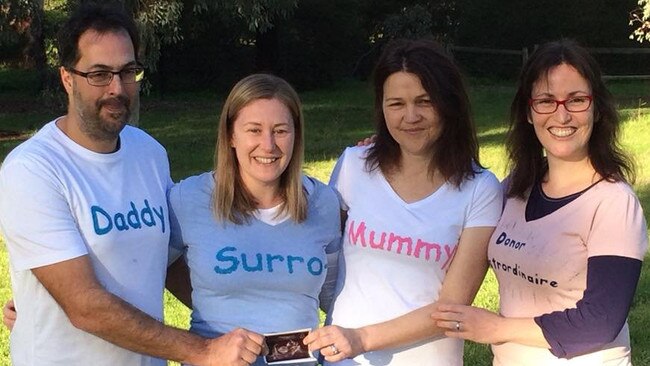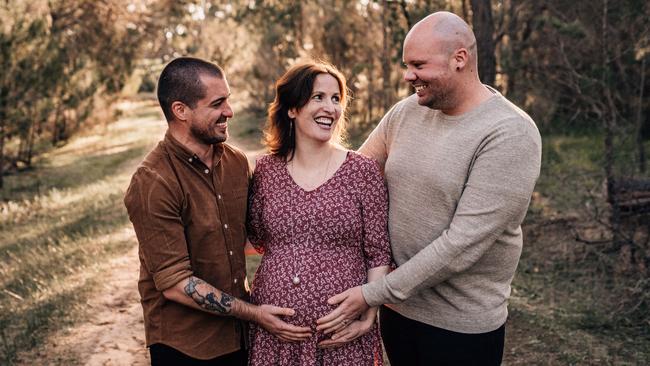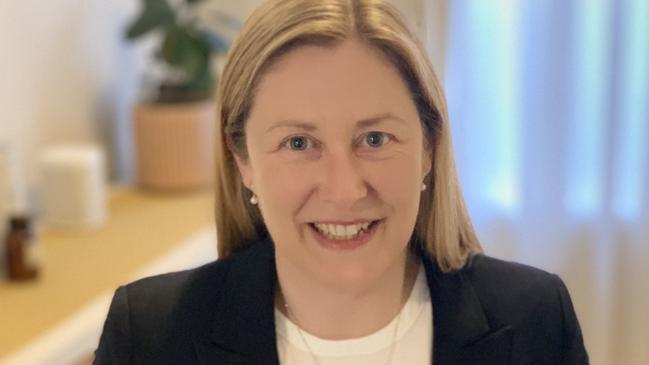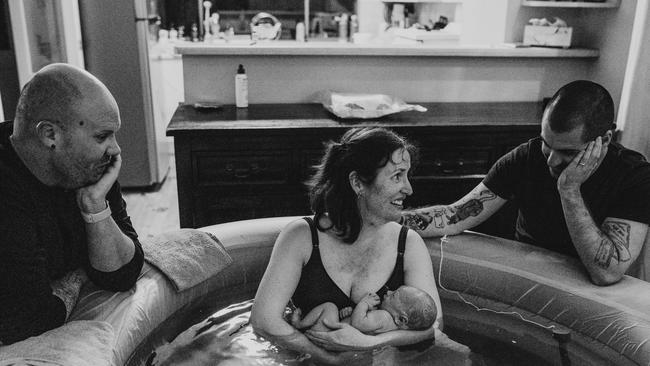Meet the SA surrogates giving the gift of life
For most, it’s an incomprehensible act of selflessness. But these women’s pregnancies were not their own — and couldn’t have brought them more joy.
Lifestyle
Don't miss out on the headlines from Lifestyle. Followed categories will be added to My News.
For many, it’s an almost unfathomable act of selflessness — but for Adelaide women Simone Cureton and Anna McKie, surrogacy is one of their greatest joys.
SA’s surrogacy community was thrust into the spotlight last week when Adelaide couple Sarah and Tom Starkey’s desperate plea for a baby went viral.
Ms McKie, a high school math teacher, has been an egg donor three times — once for a child carried by Ms Cureton — and has given birth as a surrogate twice, once for a single mum and in September 2020 for first-time dads Matt and Brendan.
It was an intensely personal tragedy that sparked Ms McKie’s surrogacy journey, with the death of a beloved young student prompting her to take stock of how she could help others.
“About 75 per cent of surrogates do it for someone they already know — but you do get some crazies like me and Simone who do it for strangers,” she said.
“I had a student who passed away at 26 due to cancer battles. I met with him sometimes when he was going through that.
“I couldn’t take the cancer away from him, but I thought that maybe I could help someone else in a big way.
“I enjoyed being pregnant and giving birth … I found it really empowering. I thought, ‘What a better way to help people?’.”

A passionate advocate, Ms McKie is responsible for the day-to-day administration of the Surrogacy Australia’s Support Service (SASS) and runs regular free webinars covering all aspects of the surrogacy process.
She wants to break down barriers and stigma around the process — and help other families across the country make their baby dreams come true.
“I want to encourage people to share their story and know that it’s okay to tell people that you have a need for a surrogate,” she said.
“That way we can normalise it and spread the word that there are babies born from surrogacy, it’s just a different way to have a family.
“Ultimately, it’s about helping people who need a surrogate feel less lost. Australian surrogates are not paid in money, but they’re paid in time, friendship and love — you want to walk away from the experience feeling like your cup is full.
“People often say, ‘I don’t know how you can do it’. I don’t know how people could be marathon runners or climb Mount Everest, but this is just something I knew I could do.”

Principal Solicitor at Equal Justice Lawyers, Ms Cureton has carried twice, in 2018 and 2021, for two separate families.
Ms Cureton said the most important factor when it came to surrogacy arrangements was the relationship between the intended parents and the surrogate.
“I went into surrogacy with a purpose, I went to find someone to carry for,” she said.
“I was driven by a desire to help my friends and see them have their family — that was my payment in all of this.
“When I found a family, we worked hard on building a friendship that didn’t just revolve around surrogacy. I don’t think you can realise the gravity of what you’re doing until long after a baby is born.”
There are just 100 births on average through surrogacy in Australia each year. In 2021, just eight babies were born via surrogate in SA.
While particulars vary from state-to-state, the only legal form of surrogacy is altruistic — meaning surrogates cannot be compensated outside of agreed medical costs related to the pregnancy.
For every one surrogacy birth in Australia, there are an estimated three babies born to Australian parents by surrogates overseas.
Currently, surrogacy is an option for same-sex couples in all states and territories apart from WA.

Ms Cureton said it was important for prospective surrogates to understand the relationship between them and intended parent extends far beyond just the pregnancy — the reward is a lifelong one.
“It’s not just about carrying a baby for someone, you will be in both of those children’s lives. We know it is in a child’s best interests to understand their genetic makeup and birth story,” she said.
“It’s an intimate thing, having a baby together. For the parents, it’s another person involved in your marriage, and for the surrogate, you’re basically having an audience for the pregnancy.”
Ms Cureton now assists other parents in navigating the legal aspects of surrogacy, including compulsory counselling and drafting of lawful surrogacy agreements.
While they are considered to be a reflection of intentions around expenses and post-birth arrangements, legal agreements drawn before birth are non-binding and an application must be made to the youth court for a parentage order once the child is born.

Ms Cureton remains an active part in the lives of both children she gave birth to — but said misconceptions that a prospective surrogate may try to keep the baby could not be further from reality.
“At the end of the day, if a surrogate changed their mind, the court would look at what’s in the best interests of the child and the surrogacy agreement may not in it of itself impact that decision,” she said.
“But I can tell you that every surrogates worst fear is the intended parents not taking the baby, and every intended parent’s fear is the surrogate wanting to keep the baby.
“It’s actually quite amusing when I meet with teams to discuss surrogacy and the surrogate is saying, ‘What happens if they don’t take the baby?’, and the intended parents saying, ‘Has there ever been a case where the surrogate hasn’t wanted to relinquish the child?
“Surrogates don’t want your baby. We’ve had our children, generally speaking, and the last thing we want is to start all over again with somebody else’s child as well.”
For both Ms Cureton and Ms McKie, their journey was about giving the ultimate gift — and the reward couldn’t have been greater.
“To see a family hold their child for the first time — I think I floated on the ceiling for about six months after that,” Ms Cureton said.
“Just watching the realisation on my intended mother’s face when she recognised that it was her child, and it was finally in her arms … it’s an awesome experience.”





